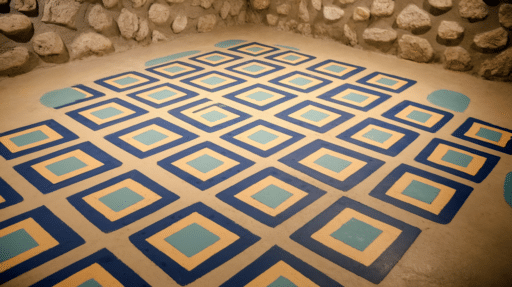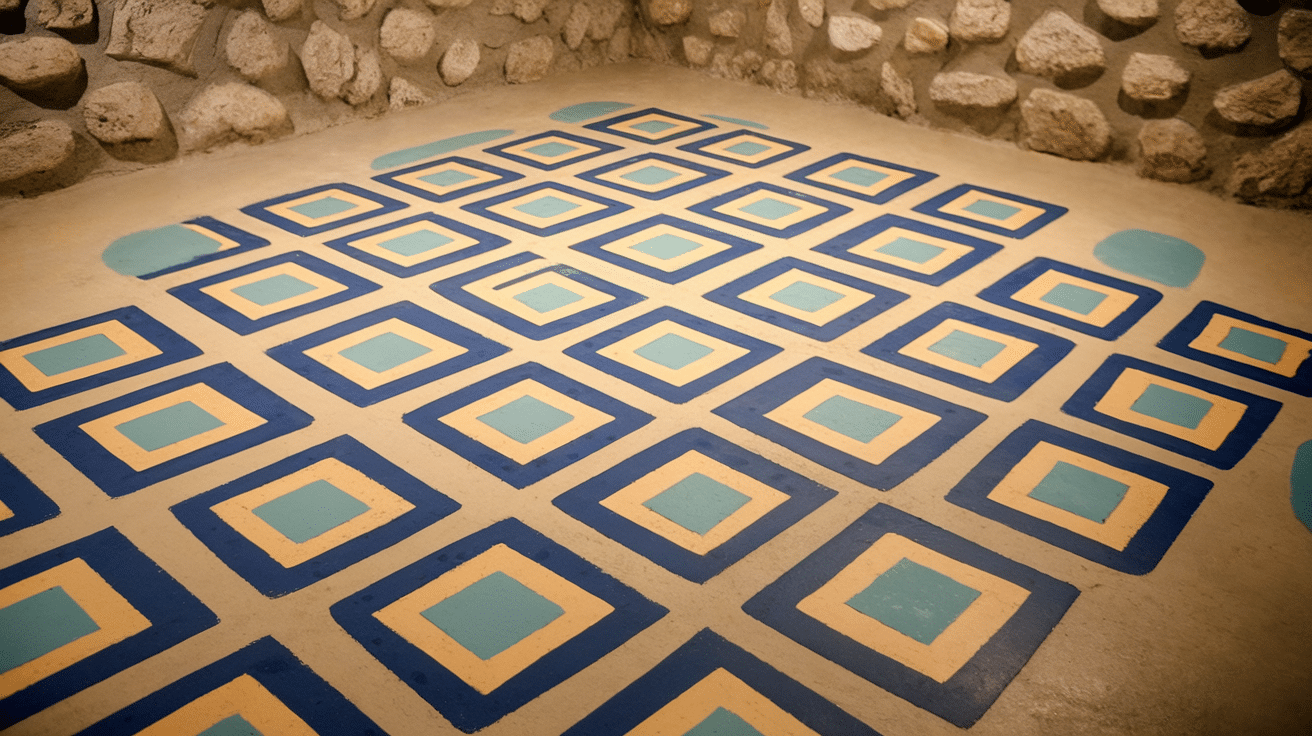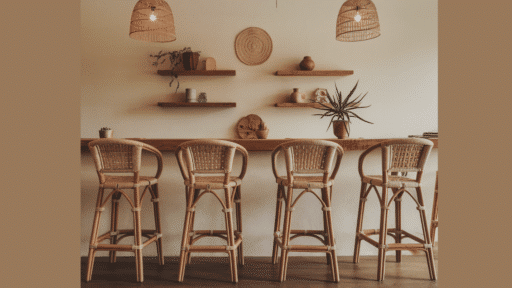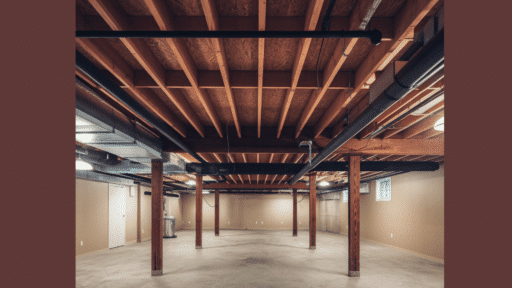Painting your basement floor can change your space in simple but important ways.
A fresh coat of paint makes concrete floors stronger and better looking while helping you keep them clean more easily.
When you paint your basement floor, you protect it from water, stains, and daily wear.
The paint fills small cracks and makes the surface smoother. This means less dust and an easier time cleaning up spills.
You can pick colors that make your basement brighter and more inviting.
Plus, painted floors help stop moisture from coming up through the concrete, which keeps your basement drier and healthier.
Before you start, you’ll need to clean the floor, fix any damage, and choose the right paint. You can turn your plain concrete floor into a strong, good-looking surface with good planning.
Why Paint Your Basement Floor?
Painting your basement floor offers many good points that make it worth doing. Let’s look at why it’s such a smart choice:
1. Protection
Paint creates a strong layer that prevents water from entering your concrete floor.
This helps stop cracks, chips, and other damage that can happen over time. The paint also blocks harmful things like oil and chemicals from soaking in.
2. Better Looks
A painted floor turns boring gray concrete into something nice to look at. You can pick colors that match your style and make your basement feel more like part of your home.
3. Easy Cleaning
Once painted, your floor becomes much simpler to clean. Dirt, spills, and dust can be wiped away quickly instead of getting stuck in the rough concrete.
4. Money-Smart Choice
Paint is cheap but makes a big difference compared to other floor fixes. It’s a simple way to make your basement look better without spending too much money.
Preparing Your Basement Floor for Painting
To paint your basement floor well, you must get it ready first. Here’s what you need to do:
Clean the Floor:
Start by cleaning away all dirt and oil spots. Use a good floor cleaner or degreaser to wash the whole floor. Make sure to scrub well and rinse until the water runs clear.
Fix Any Damage:
Look for cracks in your floor. Use concrete filler to patch these spots. Let the filler dry fully, then sand it smooth to match the rest of the floor.
Check for Water Issues:
Put a clear plastic sheet on your floor and tape it down. Wait 24 hours. If you see water drops under the plastic, you must fix this before painting.
Make the Floor Ready:
Put etching liquid on the floor. This makes tiny holes in the concrete so the paint sticks better. Wash the floor again after etching and let it dry fully.
These steps help make sure your paint job lasts long and looks good.
Choosing the Right Paint for Your Basement Floor
Picking the right paint for your basement floor makes a big difference in how it turns out. Here are your main choices:
Types of Paint:
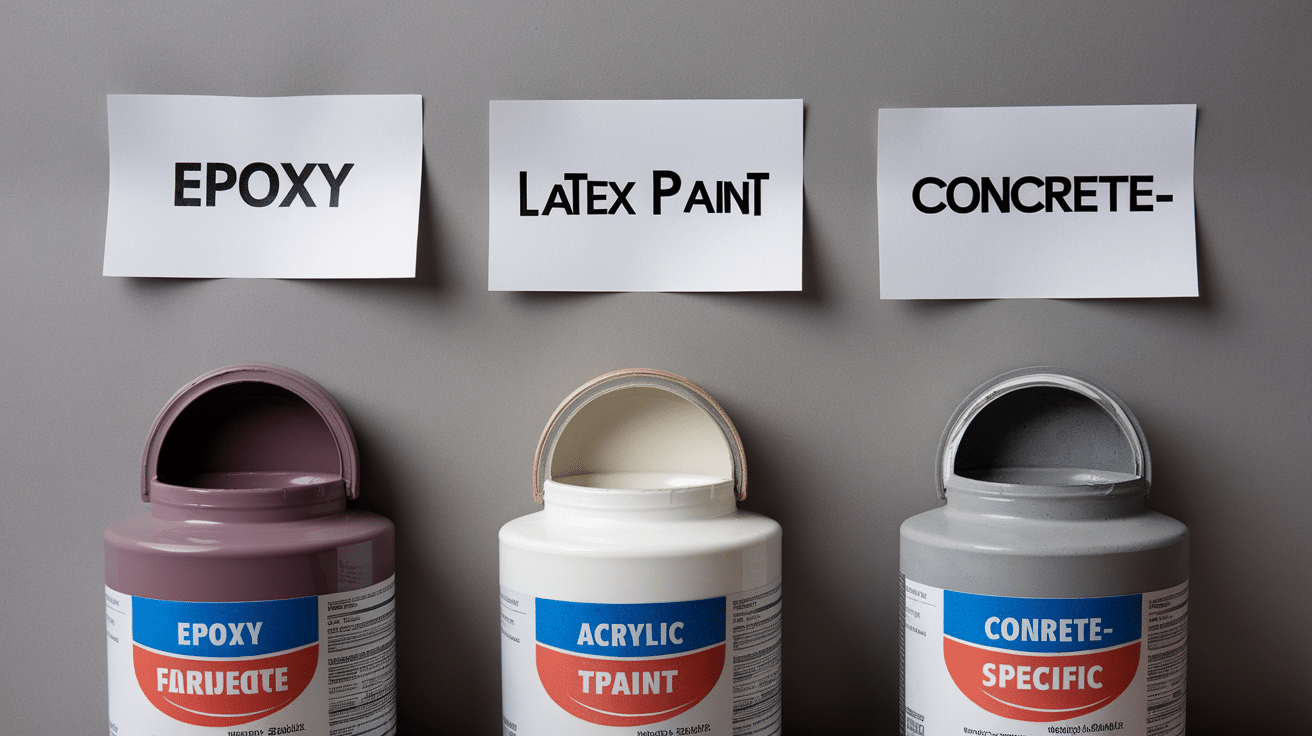
Epoxy paint is very strong and shiny. It stands up well to foot traffic and spills, making it great for busy basements. It costs more but lasts many years.
Acrylic latex paint is more affordable and easy to put on. While not as tough as epoxy, it works well for basements that don’t get heavy use.
Concrete-specific paints are made just for basement floors. They give good protection and last longer than regular paint.
Colors and Finishes:

Light grays, tans, and whites make spaces feel bigger and brighter. These colors hide dust well, too.
Try blue or green, or add simple patterns if you want something fun. Just remember, darker colors might show dust more easily.
Step-by-Step Process to Paint Your Basement Floor
Video Tutorial
For a detailed walkthrough, watch this helpful video by Ace Hardware
Step 1: Inspect the Floor
- Check the concrete for cracks, structural damage, or loose paint chips.
- Look for dirt, grease, or water stains.
- Fill cracks using concrete crack sealer or quick-setting cement. Allow it to cure completely before moving on.
Step 2: Clean the Floor
- Use a strong cleaner like a degreaser to remove dirt and debris.
- Make sure the floor is completely dry before painting.
Step 3: Tape Off Edges
- Apply painter’s tape where the floor meets the wall and along edges you don’t want to be painted, such as moldings and baseboards.
- Cover nearby areas like heaters or banisters to keep them free of paint.
Step 4: Prepare for Painting
- Open windows and use fans to improve ventilation in the room.
- Gather your tools, including a quality brush for edges, a 3/8-inch nap roller, and your floor paint.
Step 5: Apply the Base Coat
- Cut In Edges: Start by painting along the edges with a brush for a uniform finish. This will help you reach areas the roller cannot.
- Use the Roller: Paint the rest of the floor in small 4×4 foot sections. Keep a wet edge to ensure an even finish.
- Let the first coat dry for about six hours before applying a second coat if needed.
Step 6: Apply the Top Coat
- Cut In Edges Again: Repeat the same process as the base coat for the edges.
- Roll the Top Coat: Use a roller to apply the top coat evenly. Most floors need only one coat, but for extra durability, wait 1-2 hours and apply a second coat if desired.
Step 7: Let the Floor Dry
- Wait 24 hours before removing the tape.
- Avoid placing furniture on the floor for 72 hours to ensure the paint has fully cured. When placing furniture, avoid dragging it to prevent damage to the painted surface.
Maintenance and Care for a Painted Basement Floor
Taking care of your painted basement floor helps it stay nice for many years. Here’s how to keep it looking good:
1. Clean Often
Sweep or vacuum at least once weekly to pick up dust and small bits that can scratch the paint. A soft broom works best to avoid making marks on the paint.
2. Handle Spills Right Away
Clean up any spills as soon as they happen. Water, oils, or other liquids can hurt the paint if left too long. Use a clean cloth or paper towels to wipe them up.
3. Use the Right Cleaners
Pick mild soap and warm water for regular cleaning. Strong cleaners can damage the paint. Mop with a soft mop, but don’t use too much water.
4. Keep it Protected
Put a new coat of clear sealer on your floor every 2-3 years. This helps the paint last longer and keeps your floor looking fresh.
Alternatives to Painting Your Basement Floor
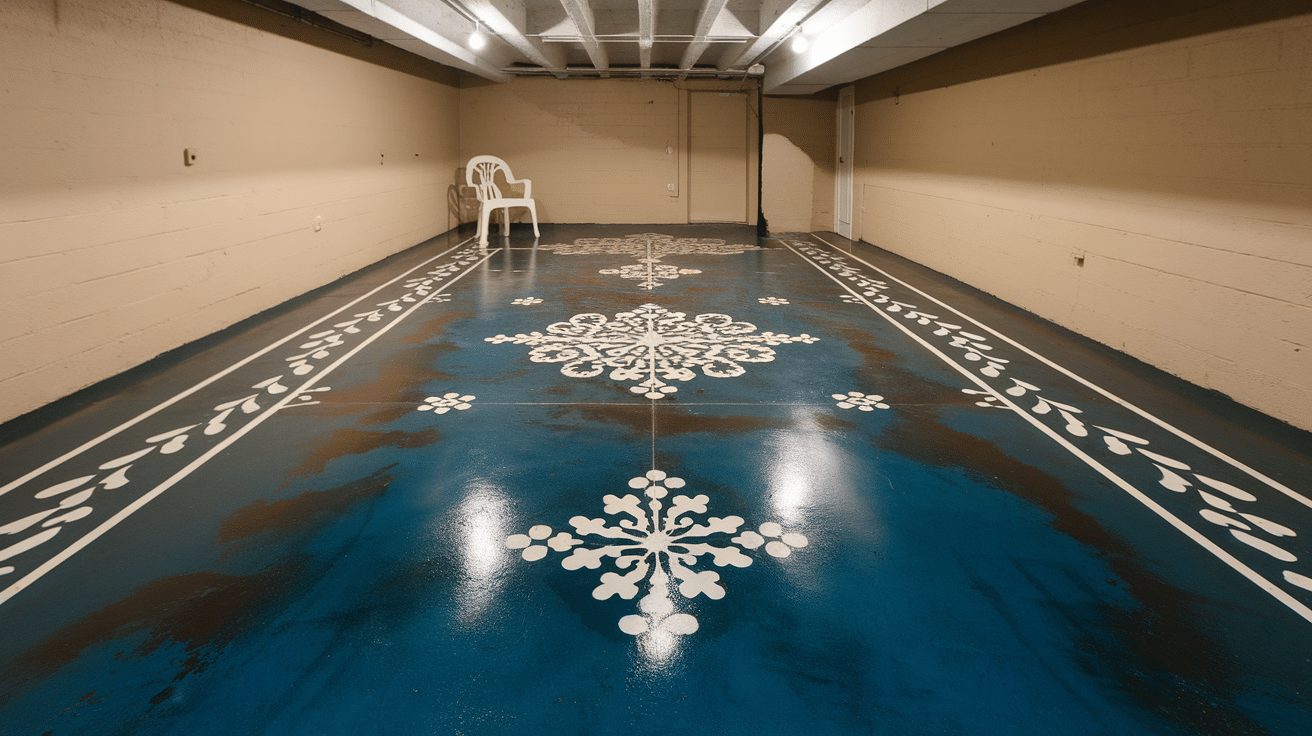
A basement with a stained concrete floor. The floor is deep blue and decorated with white patterns. The walls are painted beige and have a few nails on them. There is a white chair in the corner. The lighting is bright.
If painting isn’t the right choice for your basement floor, there are other great options:
Epoxy Coatings: These are strong and long-lasting, with a shiny finish. They resist scratches and moisture, making them perfect for busy spaces like gyms or workshops.
Stained Concrete: This option adds color to the floor while keeping its natural look. It’s a good choice if you want a rustic and unique style.
Vinyl or Tile Flooring: These give your basement a polished and decorative feel. With many designs available, they’re ideal for living spaces or guest rooms.
Final Words
Painting your basement floor is a simple way to improve your space without spending too much money. A painted floor looks good, making your basement more useful and easier to clean.
When you take time to get the floor ready and use the right paint, your work can last for many years.
The key is doing each step carefully – from cleaning and fixing cracks to picking the best paint for your needs.
We hope this guide helps you feel sure about painting your basement floor. It’s a job most people can do over a weekend, and the results make a big difference.
With some basic tools and careful work, you can change your basement floor from plain concrete into a clean, good-looking surface that you’ll be happy to show friends and family.
Give it a try – you might be surprised at how much better your basement looks with a freshly painted floor!
Frequently Asked Questions (FAQs)
1. What Type Of Paint Works Best For Basement Floors?
The best choice is paint made specifically for concrete floors. Epoxy or acrylic floor paints are ideal as they are durable, moisture-resistant, and easy to clean.
2. How Long Does It Take To Paint A Basement Floor?
Painting a basement floor typically takes 1-2 days. Preparation and drying time are the longest parts, with each coat needing several hours to dry.
3. Can I Paint Over An Old Painted Floor?
Yes, but you need to prepare the surface first. Clean the floor, remove loose paint, and sand rough spots to ensure the new paint sticks well.
4. How Do I Fix Peeling Paint On A Basement Floor?
Scrape off the loose paint, clean the area, and apply a concrete primer before repainting.
5. Is It Safe To Paint A Basement Floor With Moisture Issues?
No, you should fix moisture problems first. Use a dehumidifier and seal the floor to prevent further damage before painting.

